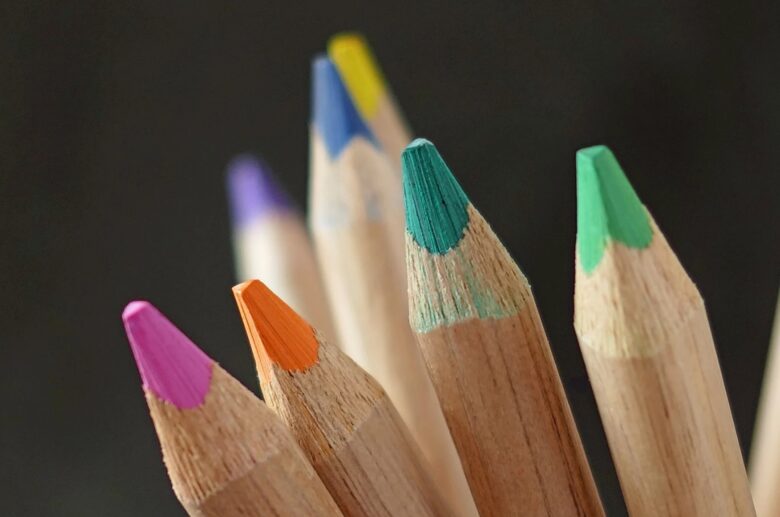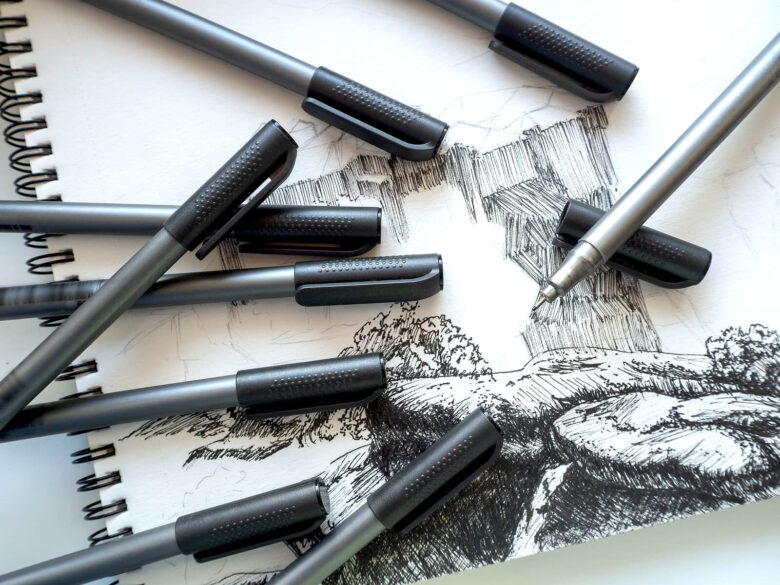Many people draw from the moment they learn to hold a pencil. At that time, materials and tools were not important to us.
As you grow up, you begin to understand more about the world and see inspiration in the things around you. You start drawing objects and scenes you see around you, such as trees, animals, and sometimes your family. With a piece of paper and a pencil, you can begin to sketch your idea.
However, if you want to become an artist, you will find that a simple pencil and paper are not enough. Drawing requires rich and professional materials and tools. Over time, you begin to see a connection between high-quality art supplies and drawing. As an artist, these supplies begin to play an important role in your drawing.
Therefore, whether you are a professional artist or a beginner who wants to take your craft seriously, you need to learn the necessary materials. In this article, you will find the basic art supplies you need to draw.
Contents
1. Pencils

Source: canva.com
Pencils may seem boring, but don’t sleep on this ubiquitous tool. They have a great range. Good quality graphite is an important part of an artist’s tool and there are many factors to consider when choosing a pencil. One of the first things to do is to figure out your personal drawing style. Do you prefer tight, detailed technical drawings, or do you prefer loose sketches, such as figure drawings? Do you like to draw thick, dark lines, or do you find yourself carefully moving the pencil back and forth across the paper?
You’re bound to find pencils you like as you go along, but make sure you have at least two or three pencils. Doing so allows you to “mix and match” your drawing needs. An “H” pencil can be used for light-colored sketches, while a “B” grade pencil is an ideal brush for catching shadows. Dervant’s pencil is one of the best kits for sketch-loving professionals and beginners.
2. Colored pencil
Maybe you don’t just want to create pictures with gradients between black, white, and gray, but you want to add color to your art.
If you like this style, I suggest that you must pay attention to the quality of the pencil. Prismacolor Premier is a good choice. Their colored pencils are easy to use and can layer colors to generate applications that look like paintings.
You can buy hard and soft colored pencils. Softer pencils are always easier to smear and tint with mixed stumps, while harder pencils can create lighter lines just like harder graphite pencils.
3. Brush and ink for drawing

Source: thepencompany.com
The traditional ink tool is the brush. For applied ink or watercolor, a good quality sable brush is best. They can hold large amounts of fluid and, if well cared for, maintain their point.
A dip pen is a pen holder with an interchangeable flexible metal tip. Some nibs only fit in certain pen holders, so try them out before buying. While square, chiseled, and round nibbles all produce interesting effects, sharp nibbles are well-suited for graphics.
Instead of steel tips, traditional quills, bamboo pens, and reed pens were used. Quills made of goose feathers are a pleasure to use and give a wonderfully sympathetic and expressive line.
4. Pencil sharpener
A pencil sharpener is a ubiquitous and common tool. They are tools for sharpening any kind of pencil, whether colored, charcoal, or plain graphite. Generally speaking, there are two types of curly knives. Regular hand sharpeners that every kid can use, and electric sharpeners.
You can buy your favorite manual sharpener on Amazon. Although the manual sharpener style is simple, many are high-quality products.
There are many low-quality electric sharpeners out there, so be careful what you buy. Bostitch Electric sharpener is a qualified sharpener that is cheap and durable. It is quick for sharpening pencils and is easy to use. It doesn’t take up much space, and the design is sleek and modern. You can buy them at Staples and get big discounts here.
5. Sketchbook

Source: finearttutorials.com
Sketchbooks are one of the most important tools in any artist’s collection. For artists, sketchbooks are where designs come alive. Sketchbooks are also the perfect surface for artists to hone their artistic skills. It allows the artist to practice every day. The more time a painter spends on his painting, the better his drawing becomes. It is the driving force behind successful art and artists.
If you plan to use a sketchbook for daily practice, make sure it is both durable and has enough pages to accommodate all of your ideas. As for sketchbooks, spiral-bound sketchbooks allow you to lay the book completely flat as you draw. This is a great feature. Canson Drawing Books, with spiral binding, are easy to wipe clean and are a very convenient tool for artists to practice.
6. Charcoal
There are various ways to create black-and-white images besides sketching with graphite. You can do this by using charcoal.
Charcoal is a medium that you can use for very detailed figure painting. Charcoal comes in the form of sticks and pencils. Charcoal sticks are often classified as “vines” or “compresses.” Vine sticks are known for giving artists the ability to draw shallower lines, while compressed sticks create deeper brush strokes.
Charcoal does not need to be graded like graphite (H to B) and can be easily adjusted by the pressure you apply to the stick or pencil.
Charcoal pencils have the great advantage that they can be sharpened just like regular or rubber pencils. For charcoal drawing, you can try MARKART Charcoal Pencils.
If you believe that painting is not just a hobby, but a passion, then you must invest in more tools to practice and improve your creative ability. Experiment with different brands of tools until you find your favorite vendor which can really help you in painting.
